Clashes between Kamathipura-s residents and sex workers signal changes in Asia’s second largest red-light district that’s ironically seeing prostitution at an all time low

Once infamous for the areaÃ?Â?Ã?Â?s sex workers, Kamathipura is on the verge of erasing its history altogether. This file photograph, taken in 2003, shows sex workers outside their homes, soliciting customers. This may soon be a thing of the past, with as
If Kamathipura disappears, it would be the best thing to happen to us,” says Yasmina Ahmed named changed, who has lived all her life in the South Mumbai neighbourhood bordering Grant Road. The frustration is palpable as she chats with us, amidst the evening din of 8th Lane. A private tuition teacher for the last 20 years, Ahmed asks us to refrain from using her real name; parents of her students may not be comfortable knowing where she lives.
ADVERTISEMENT
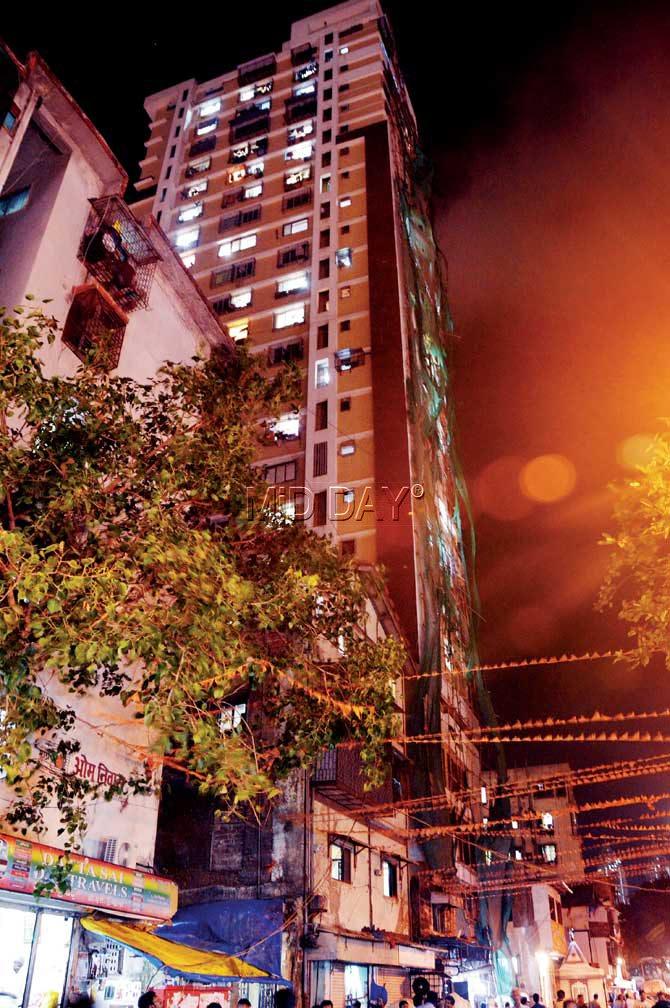 Shaad Towers, a 26-storey building in 8th Lane, where the going price of a 300 sq ft flat is Rs 70 lakh, offers a peak into the white-washed future of Kamathipura. Pic/Sayyed Sameer Abedi
Shaad Towers, a 26-storey building in 8th Lane, where the going price of a 300 sq ft flat is Rs 70 lakh, offers a peak into the white-washed future of Kamathipura. Pic/Sayyed Sameer Abedi
Interestingly, business in Kamathipura hasn’t kept pace with the notoriety of the address. “Why is Kamathipura still described as Asia’s second largest red-light district? There are only 1,500 sex workers left. Compare that with 50,000 residents. Yet, it’s them and not us, who continue to define this place,” she argues. For Ahmed, and many like her, residing in Kamathipura comes at the cost of being typecast as a member of the bordello-club that operates in the vicinity.
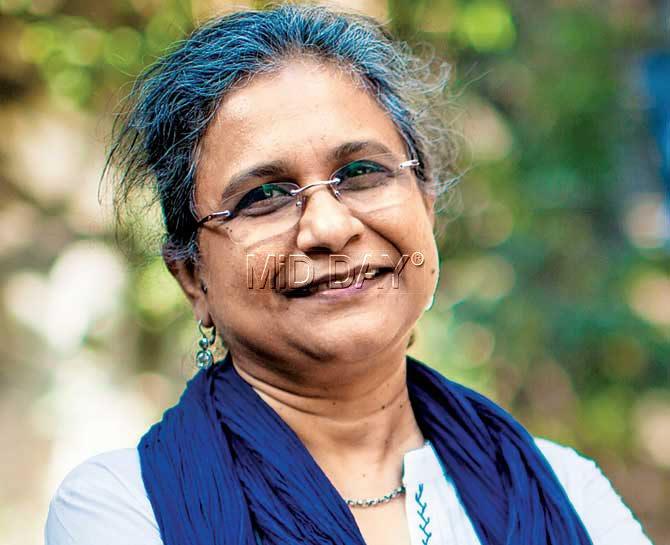 Priti Patkar, co-founder and director of Prerana
Priti Patkar, co-founder and director of Prerana
But, there is hope.
Redevelopment can sanitise the locality and help salvage residents’ respect, says Ahmed.

Once infamous for the area’s sex workers, Kamathipura is on the verge of erasing its history altogether. This file photograph, taken in 2003, shows sex workers outside their homes, soliciting customers. This may soon be a thing of the past, with associations either signing up or considering redevelopment. PIC/NIMESH DAVE
The dream has found force with builders, both small and big, showing an interest. Two high-rises already stand here among narrow alleys, and future residents are being lured with homes of 300 to 500 sq ft as compensation for the 10x10 rooms they occupy in dilapidated structures.
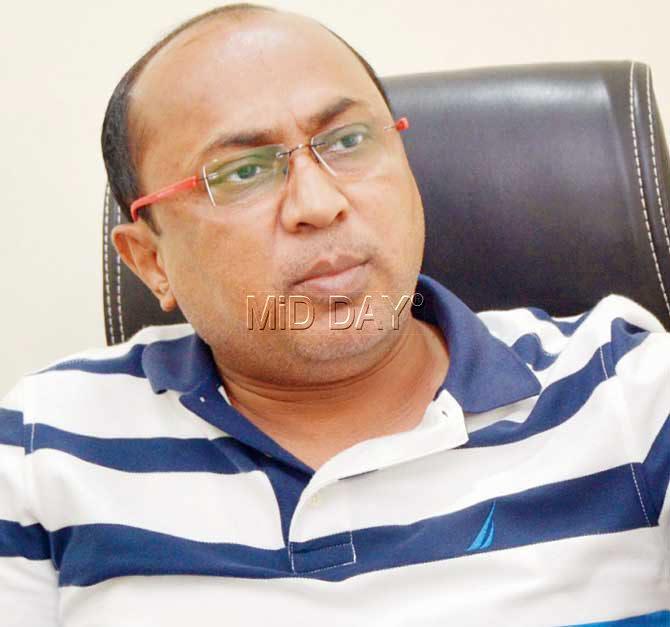
Anwar Shaikh, owner of Mithila Builders which has acquired Bengali House on 5th Lane for redevelopment
The result — the dynamics within Kamathipura are changing, even if slowly. “Prostitution has dipped by 50 per cent,” says Priti Patkar, co-founder and director of Prerana, an NGO that’s been working with Mumbai’s commercial sex workers since 1986.
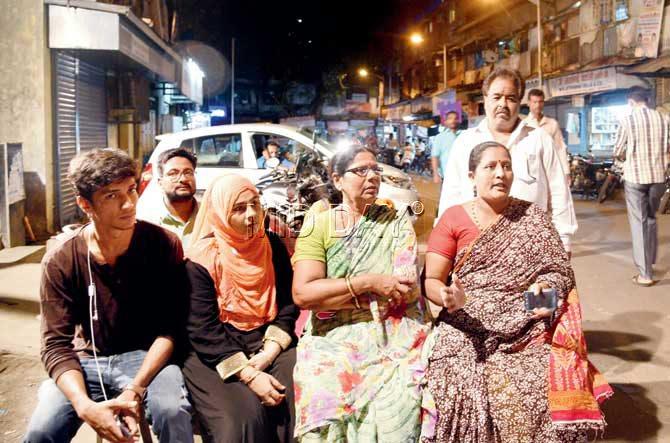
Members of the Kamathipura Vyapari and Rehvaasi Ekta Committee, set up in November 2015, have been patrolling the area to make sure sex workers do not bring business to the streets. “Because of them, our children find it difficult to go about the area,” says Rehana Asif Shaikh, president second from left. Pic/Suresh Karkera
Dr Svati P Shah, assistant professor at the University of Massachusetts, who in 2014 published an ethnographic monograph on Kamathipura, titled Street Corner Secrets: Sex, Work and Migration in the City of Mumbai, projected a more abysmal figure. “The Kamathipura of 2012 was greatly changed from that of 2002... The population of brothel-based sex workers in the area has dwindled from 30,000 to roughly 2,000,” she wrote. Both Patkar and Shah predict that Kamathipura, which found its first settlers in the 1700s among the Kamathis or construction labourers from Telangana, who had arrived to help construct the various causeways that would link the seven islands of Bombay, is on the brink of rebranding. The only reminder of its past will be the pin code, 400008.
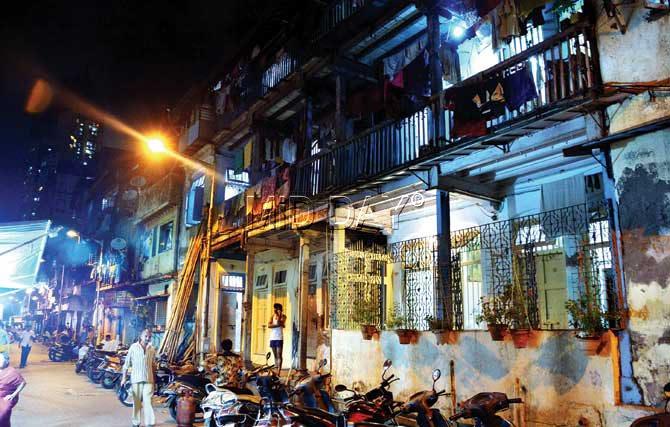 Shamrao Channa, president of Kamathipura Landlord Welfare Association KLWA, says his association has invited tenders for redevelopment. Once they finalise a builder, his two-storey building above on 8th Lane, along with others, will go for cluster redevelopment. Pic/Sayyed SAmeer Abedi
Shamrao Channa, president of Kamathipura Landlord Welfare Association KLWA, says his association has invited tenders for redevelopment. Once they finalise a builder, his two-storey building above on 8th Lane, along with others, will go for cluster redevelopment. Pic/Sayyed SAmeer Abedi
As the past, both architectural and social, is gradually erased, the question remains: Who can claim a right to Kamathipura? Is it the original inhabitants who occupied it, the sex workers who made it their home or the new residents of high-rises?
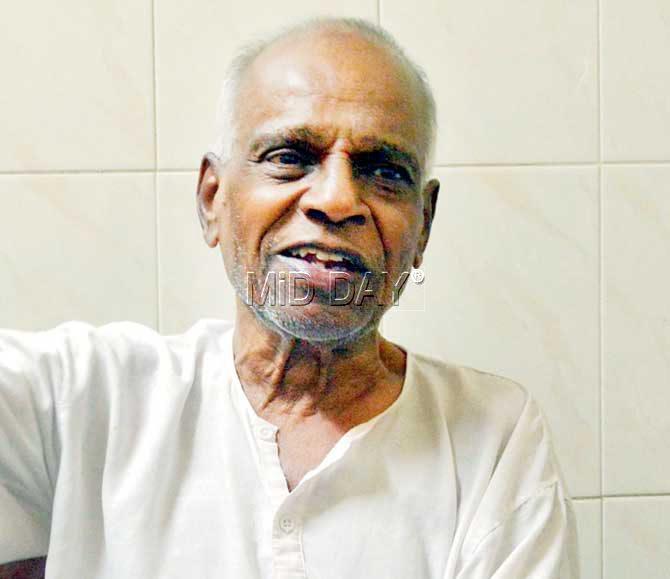
Shamrao Channa
Mine, not yours
During the Kamathipura Night Walk, held last week by RaahGeer, a city-walk organisation founded by architect Deepa Nandi, the area’s transformation was for everyone to see. Nandi speaks of the experiences of Brijesh Arya, of NGO Pehchan, who collaborated on the walk. “When Brijesh first visited Kamathipura in 2006,” says Nandi, “four or five lanes were dominated by sex workers. Now, only lanes 11 and 12 are in business.
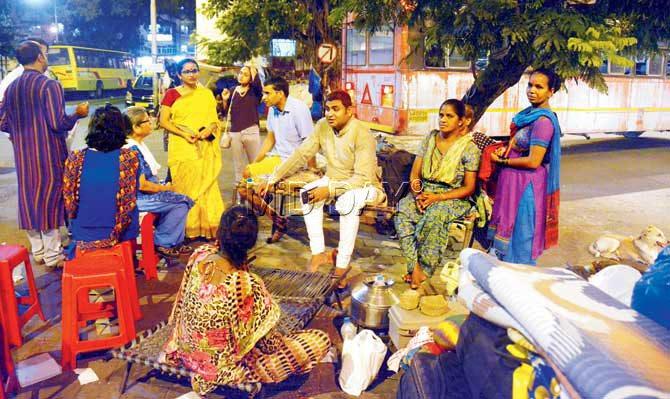
Participants, who attended the Kamathipura Night Walk, held on May 27 by RaahGeer — a city-walk organisation founded by architect Deepa Nandi — were exposed to the changing dynamics of the area. PIC/PRADEEP DHIVAR
Lane 1 is the transgender street. The rest are occupied by locals,” adds the 28-year-old of the 52-acre maze of 14 lanes that make up this area.
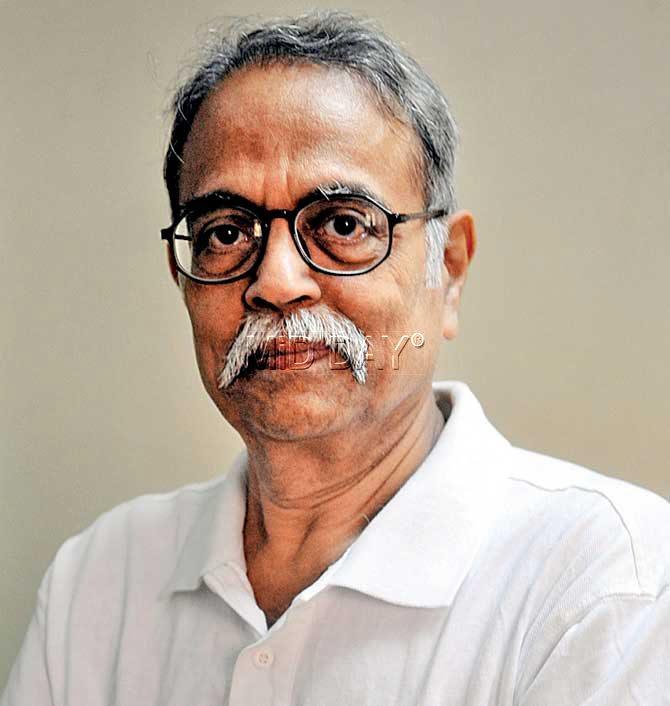
Deepak Rao, historian
Here, the lines are drawn clear with a homegrown variety of ghettoization; clashes between sex workers who ‘overstep’ the border are everyday. When mid-day met some residents last week, they brought up “Sunday ka lafda”. The events of May 29, which they refer to, started with the Kamathipura Vyapari and Rehvaasi Ekta Committee asking sex workers to not solicit customers on the streets, and conduct business from inside their quarters. The rest of the narrative varies, with each party claiming they were attacked first. News of this incident has rippled across the area. A banner put up by residents asking sex workers to not roam residential lanes is brandished near 8th Lane. The streets are at war with each other.
Sangeeta, a commercial sex worker CSW in her 40s, who has worked in 11th lane for over 10 years, tells us about the “burkhewale log”, who have been harassing her and her friends for the last six months. “They follow us even when we go to have tea at a restaurant or visit a medical shop. Two days ago, they beat up a woman sex worker who was pregnant,” she says matter-of-factly.
During one of the meetings with the CSWs at 11th Lane, the group suddenly disbanded, scurrying into their rooms locally called pinjras, when they saw the self-appointed vigilantes stroll past.
Another CSW, Sunita Yadav 54, gets teary-eyed as she relays the harassment by police and locals. “I have worked here for 30 years, and never before have we suffered. Women, who claim to be residents of the area, visit our lanes almost every night, and manhandle us for no reason. The police also randomly pick us up.”
According to city history enthusiast Deepak Rao, in the 1980s and ‘90s, the Mumbai police had the practice of raiding brothels when there was information about someone forced into sex trade, or if there were incidents of under-age girls being dragged into the business. “Today, it is a different scenario as motives appear to have changed,” he says.
Residents agree. All they asked the Nagpada police to monitor were sex workers soliciting on the street. But when the police picks up sex workers from inside the brothels, residents suspect something else is afoot.
Shah, in her book, too alludes to this. “...the decline of brothel-based sexual commerce…is the result of a complex convergence of interests between real estate developers, politicians, local police, municipality and abolitionist NGOs,” she writes.
Rehana Asif Shaikh, president of the Samiti, had another story to tell. “We have no problem with them carrying out their business; after all it’s their bread and butter. But yes, we have a problem with them standing out in the open to solicit customers. My parents and grandparents have lived here for years, and the women would always operate from their quarters. In the last few years, despite the drastic drop in their numbers, more women are now on the streets. It has become impossible for us to walk freely,” she says.
The 21-member Samiti formed last November to deal with the growing “sex worker menace”, among other pressing issues in Kamathipura. Sowrakshan Koy-alkar, secretary of the Samiti, says they have nothing to do with the builder lobby, as alleged by the CSWs. “This is a lie. We just want the roads to be made safer for our children,” she said, adding, “Kamathipura belongs to us, and the Kam-athis who helped construct buildings like Chhtrapati Shivaji Terminus.”
In need of a red-light area?
“No, not anymore,” said Patkar. “Frankly speaking, even before Kamathipura could die, several places cropped up to rent out to sex workers.”
In the heart of Lamington Road, a five-minute drive from Kamathipura, what was once a ‘social club’ on the first floor of a residential building, was in 2013 converted into a lodging house, where women can rent out beds through the day. When residents opposed the move, they tried to buy them out with gifts — and partially succeeded. “Today, if you go to CST, you find women soliciting,” says Patkar. A sex worker confirmed that because business is at an all-time low at Kamathipura, they wait outside Bandra and Kalyan stations. The chance of landing a customer among lakhs of commuters is high.
Patkar’s NGO’s data reveals that “CSW hubs are now in Mira-Bhayendar, Kalyan, Vashi, Virar, with some women having moved to Pune and Sangli too”.
“The real-estate boom has expedited the change,” she confirms, forcing CSWs to up their ante in order to attract clientele in Kamathipura. “Just because Kamathipura may not exist as it did, it doesn’t mean prostitution is finished. It now, in fact, carries on in sundry nook and crannies of Mumbai. There is no longer the necessity of visiting an organised set-up like a brothel,” Rao adds.
But the loss of a stronghold could work against sex workers, diminishing the feeling of a community and support-system. The scattering of CSWs makes it hard for non-profits and NGOs to reach out to them, said a social worker.
Developer moths to a flame A number of residents’ associations have sprung up aiming to hold locals united every time a builder comes knocking.
The two lanes on which the brothels now operate have no such association, sadly. Ravi Kumar Chitla, a landlord from the area, is a member of Sri Sai Cooperative Hou-sing Society. He says he is tired of the white lies he says to his relatives back in Telangana. “I tell them I live in Mumbai Central, and when they come visiting, I make sure they enter the area without accessing the brothel lanes,” he says. He owns three homes in the neighbourhood, all rented out. And the lane in which he lives, 13th Lane, is currently considering revamping the two-storey houses into high-rises. “When we go into redevelopment, we have the luxury of parks, fire exits, proper toilets and parking lots,” he says.
But residents too remain divided. The Kamathipura Landlords Welfare Association KLWA, for instance, has headed for cluster redevelopment. Its president, Shamrao Channa, who once worked as gazette officer with the BMC, came to Kamathipura after retirement to settle down with his community from Telangana. He is unfazed by Kamthipura’s infamous association with CSWs.
On 8th Lane, one of Kamathipura’s earliest high-rises have come up. Shaad Towers is a 26-storey building, completed six months ago, where the going price of a 300 sq ft apartment is Rs 70 lakh. A resident, who once lived in a two-storey building that sat in place of the tower, now watches the goings on below from an 11th floor vantage point. He soars with hope, knowing that the rents, which used be as low as Rs 1,000 are set to only double. Shaad Towers, a fancy name, replaces that of the earlier building named after its landlord, Laxman Tumma.
Anwar Ahmed Shaikh, founder of Mithila Builders, meets us in a cabin on a plot on 5th Lane. A 22-storey building he has planned will come up in four years in place of Bengali House, which is now levelled ground. The going price of one of his flats, he estimates, will be Rs 60 lakh, a figure the middle class will find viable, especially if for a home in Central Mumbai. “The cost is low,” he says, “because the area is a red-light district. This is the price you pay for flats beyond Jogeshwari. We are fine with the sex workers operating out of wherever they are. In fact, redevelopment might mean that they get more customers right within this area.”
Will Kamathipura, in the near future, be a name that residents proudly embrace? Shaikh is positive. “If Kamathipura is redeveloped and gets a new name, the locals, even if living in 100 sq ft homes, will be as happy as residents of Peddar Road. The ‘daag’ will be gone.”
 Subscribe today by clicking the link and stay updated with the latest news!" Click here!
Subscribe today by clicking the link and stay updated with the latest news!" Click here!








